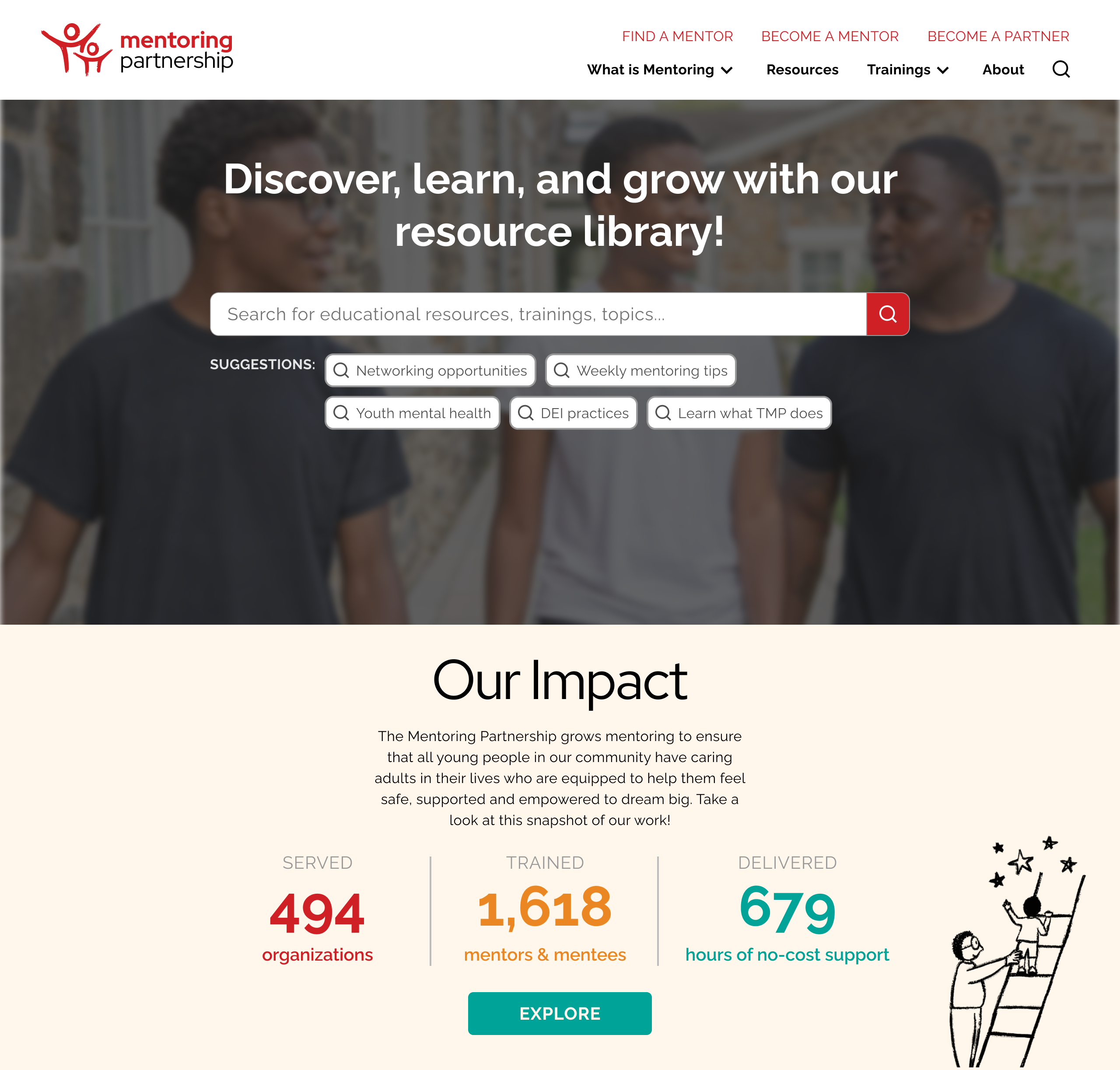
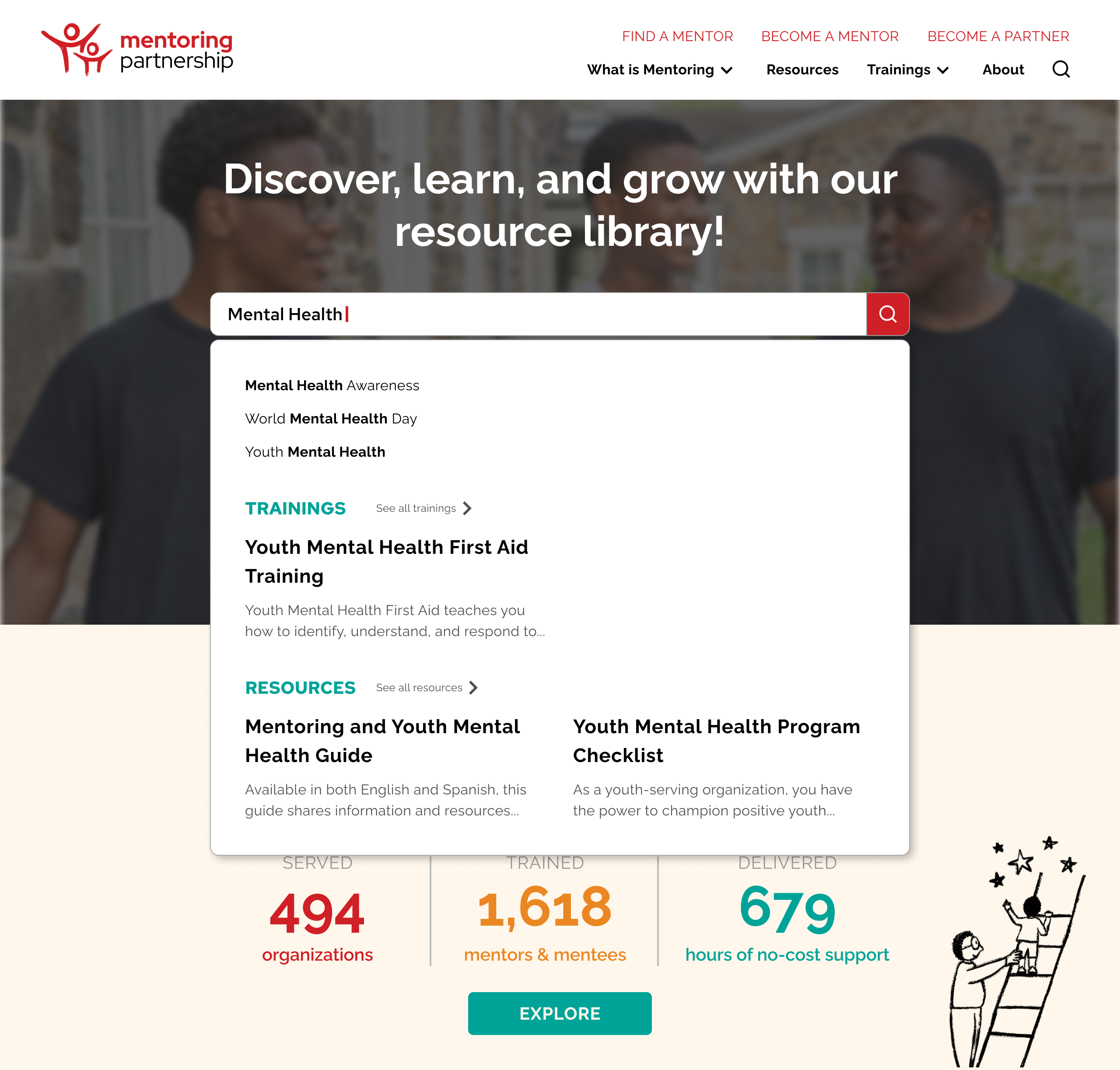
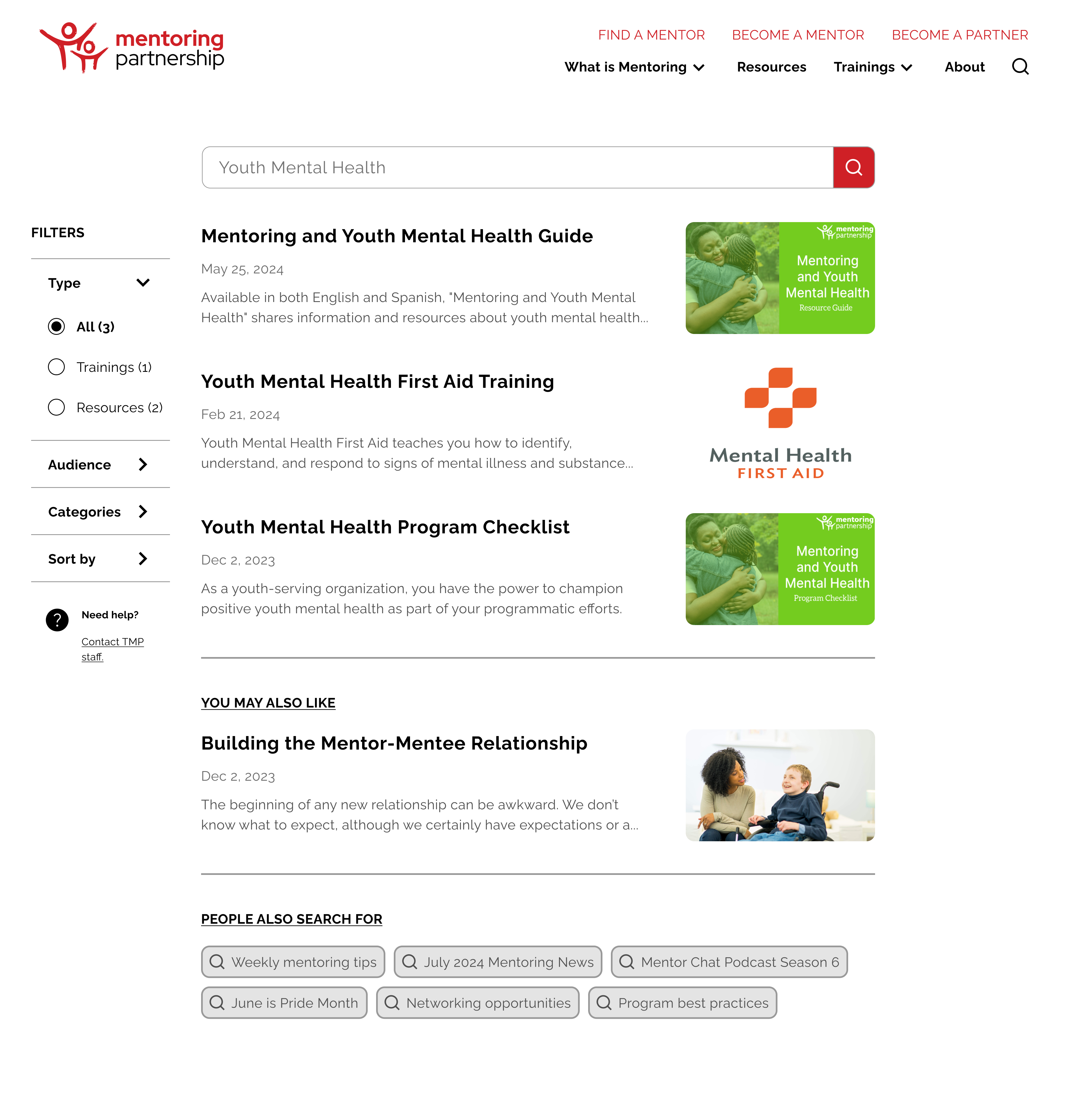
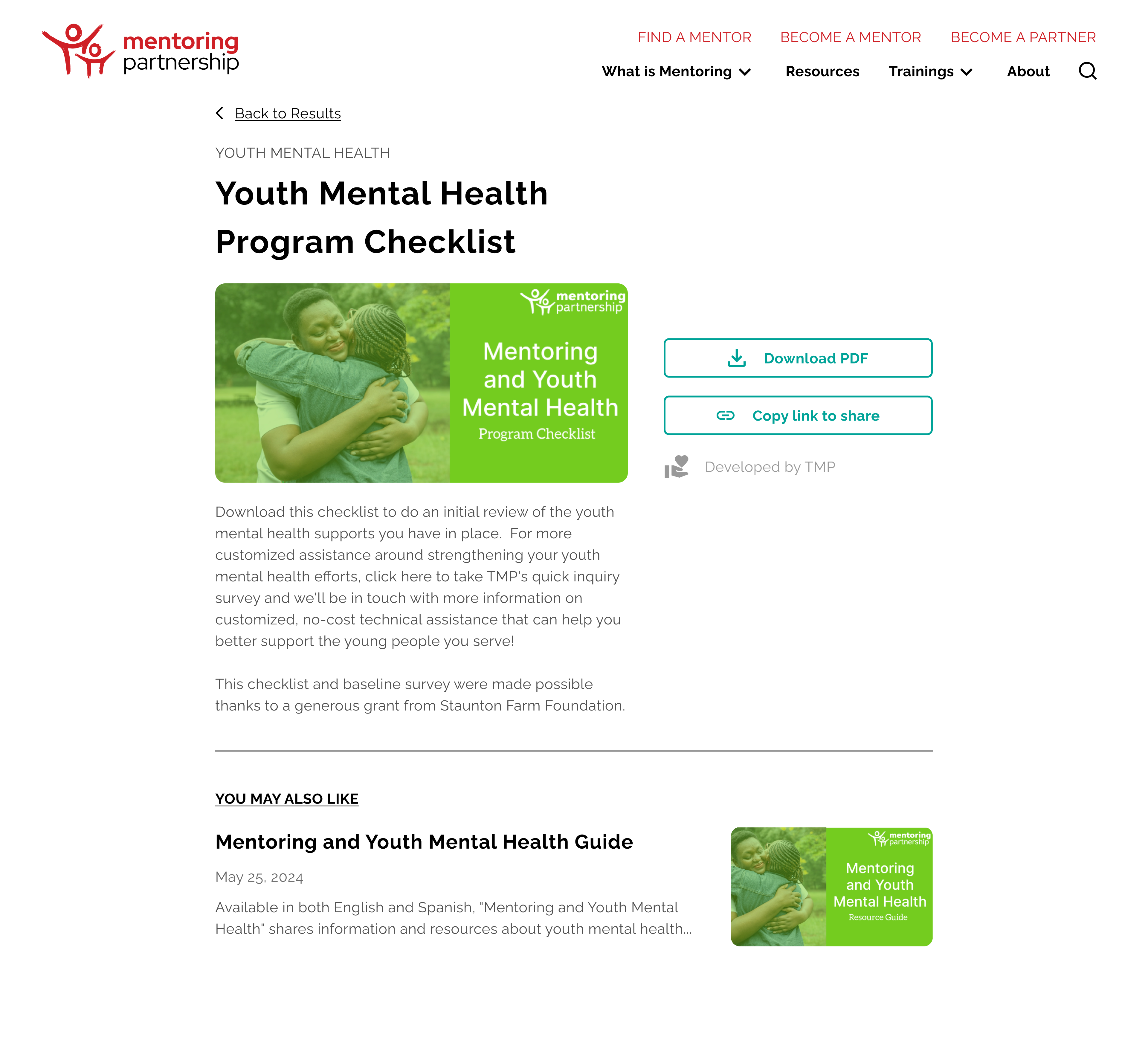
We also interviewed users about their common methods of finding resources and discovered that they primarily rely on Google for searching. Based on users’ feedback on TMP’s website and their typical use of Google for searching, we mapped out a search journey map showing their goals, challenges, and emotions. This helped us develop a comprehensive understanding of users’ common mental models and practices when searching for resources.
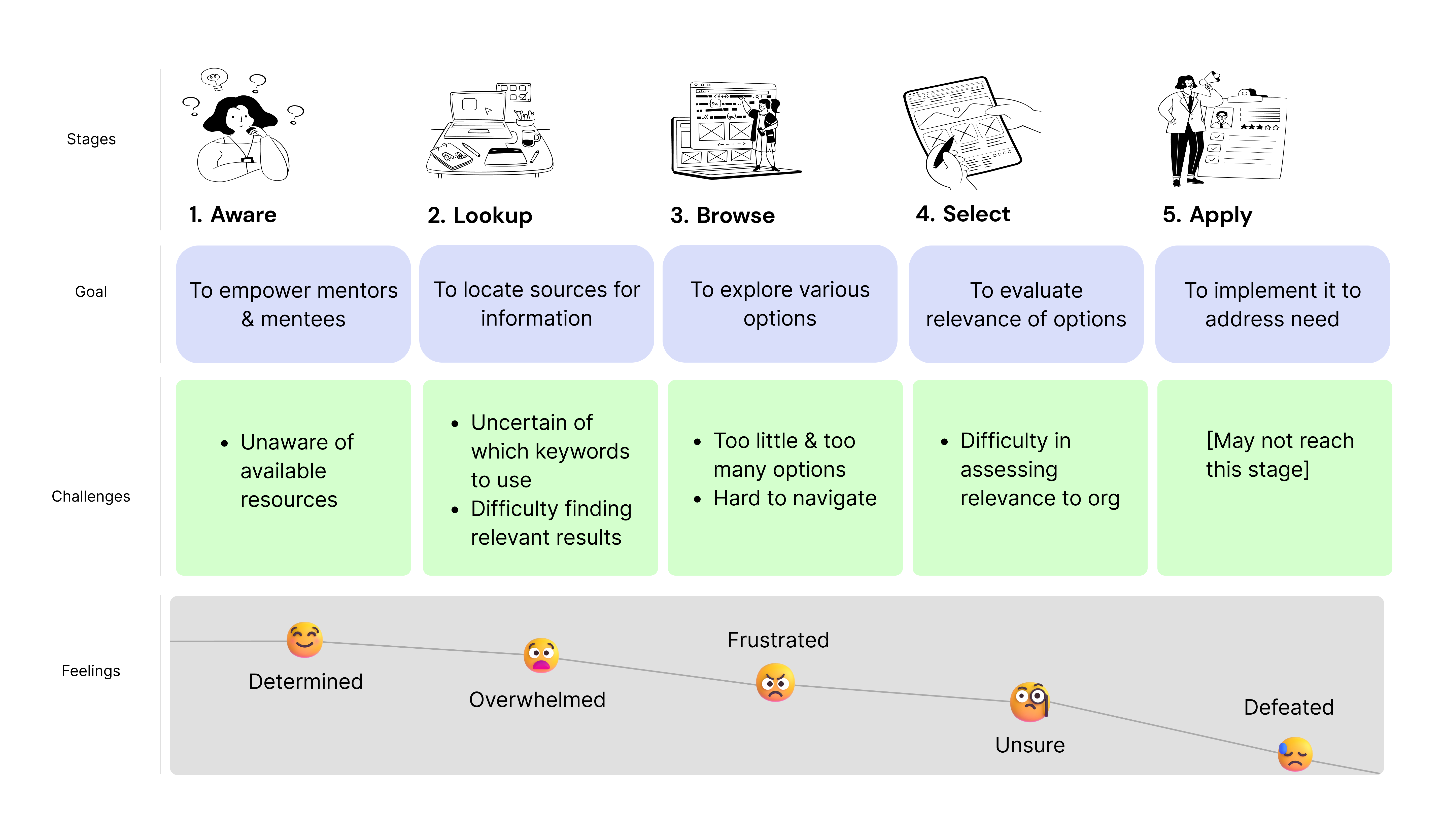
(A 5-stage user search journey identified through our literature review and interviews)
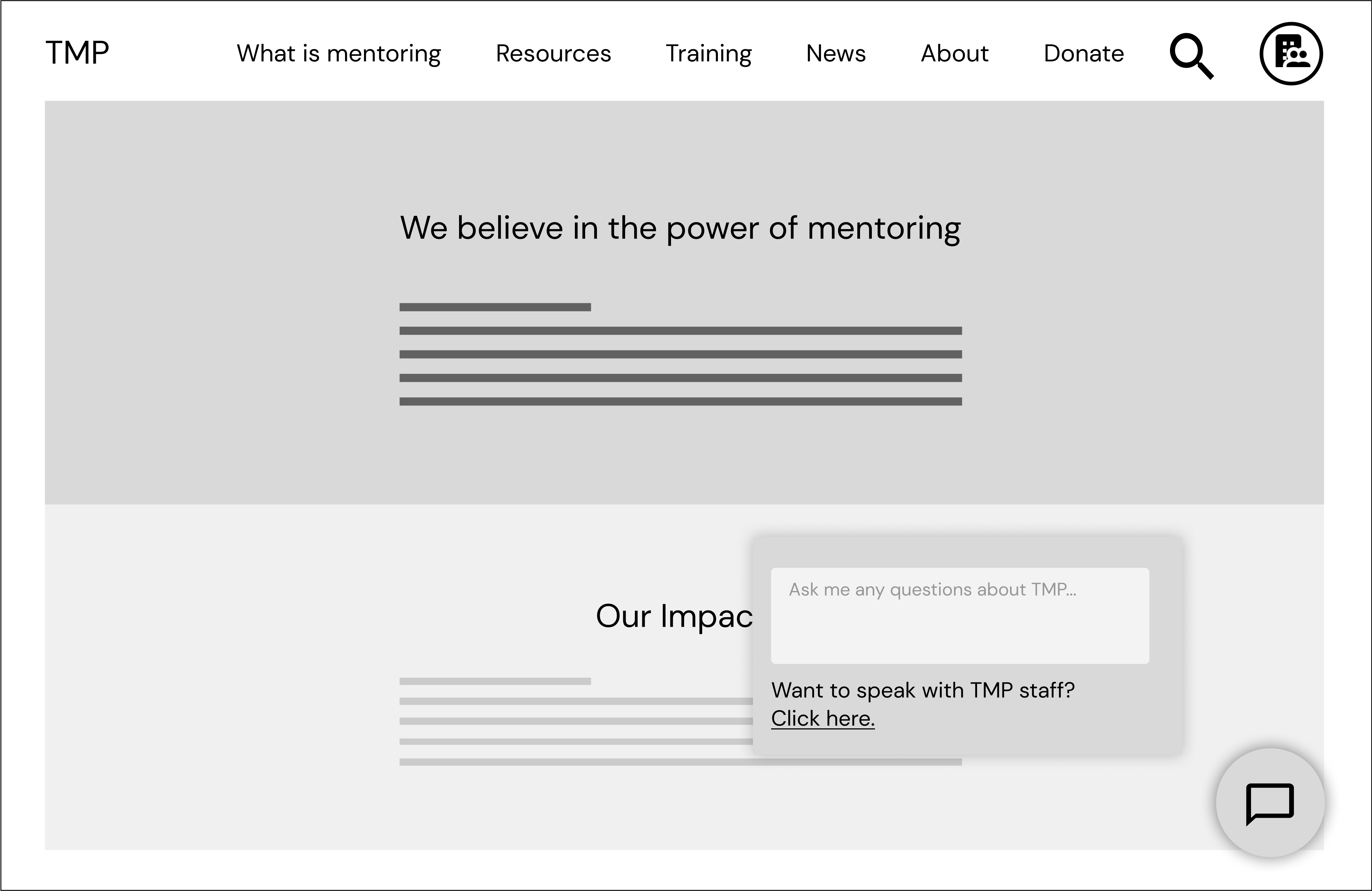
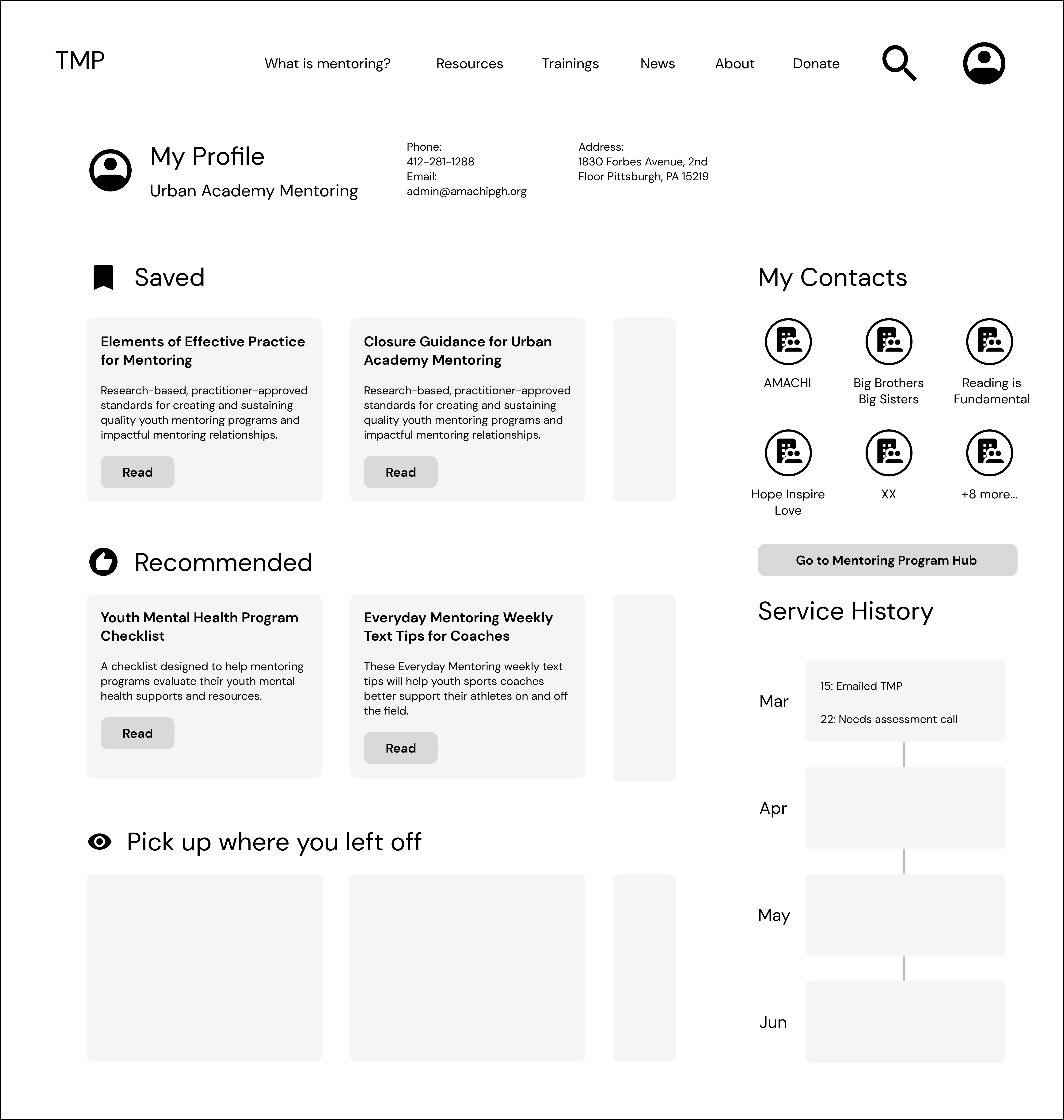
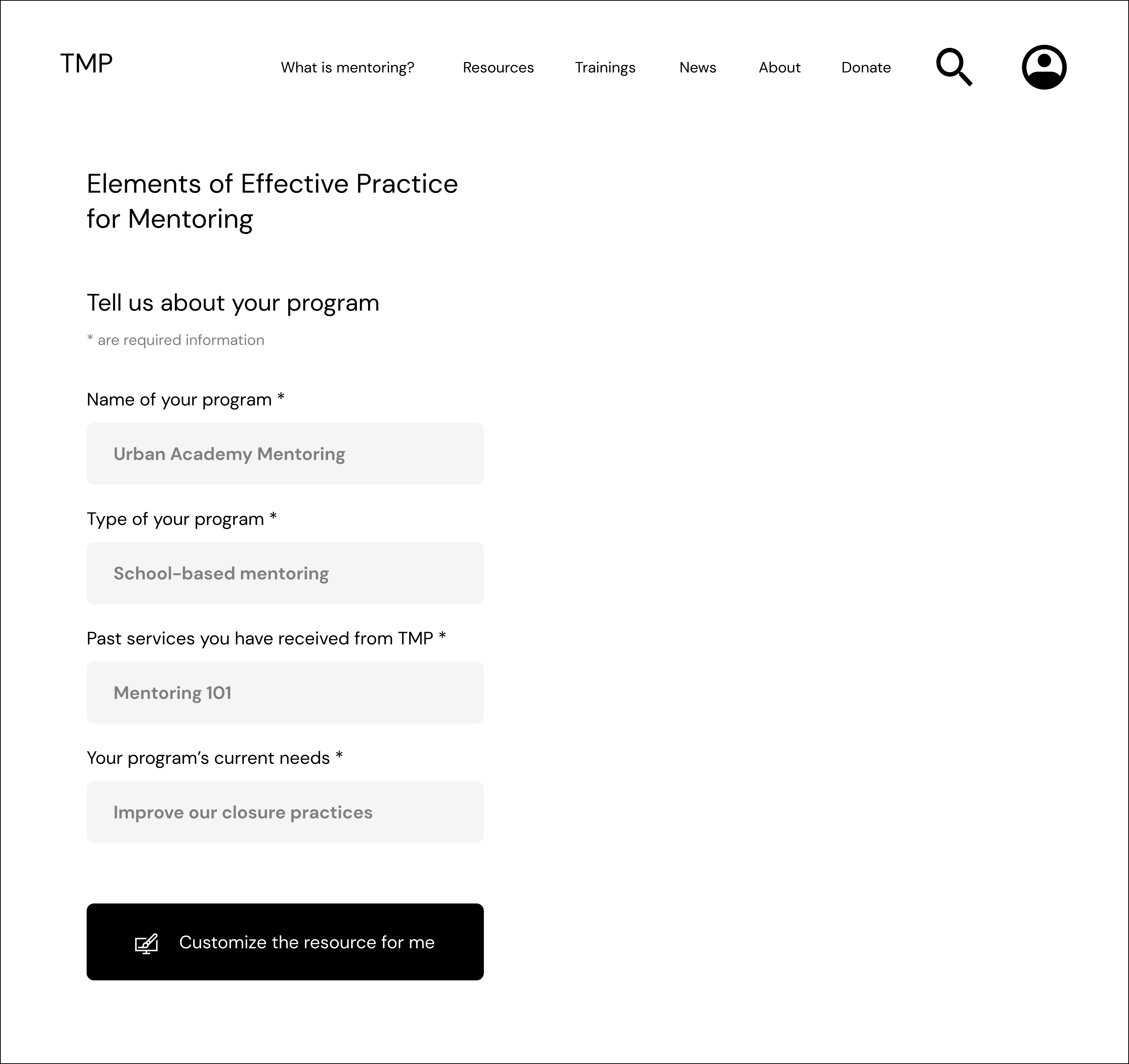
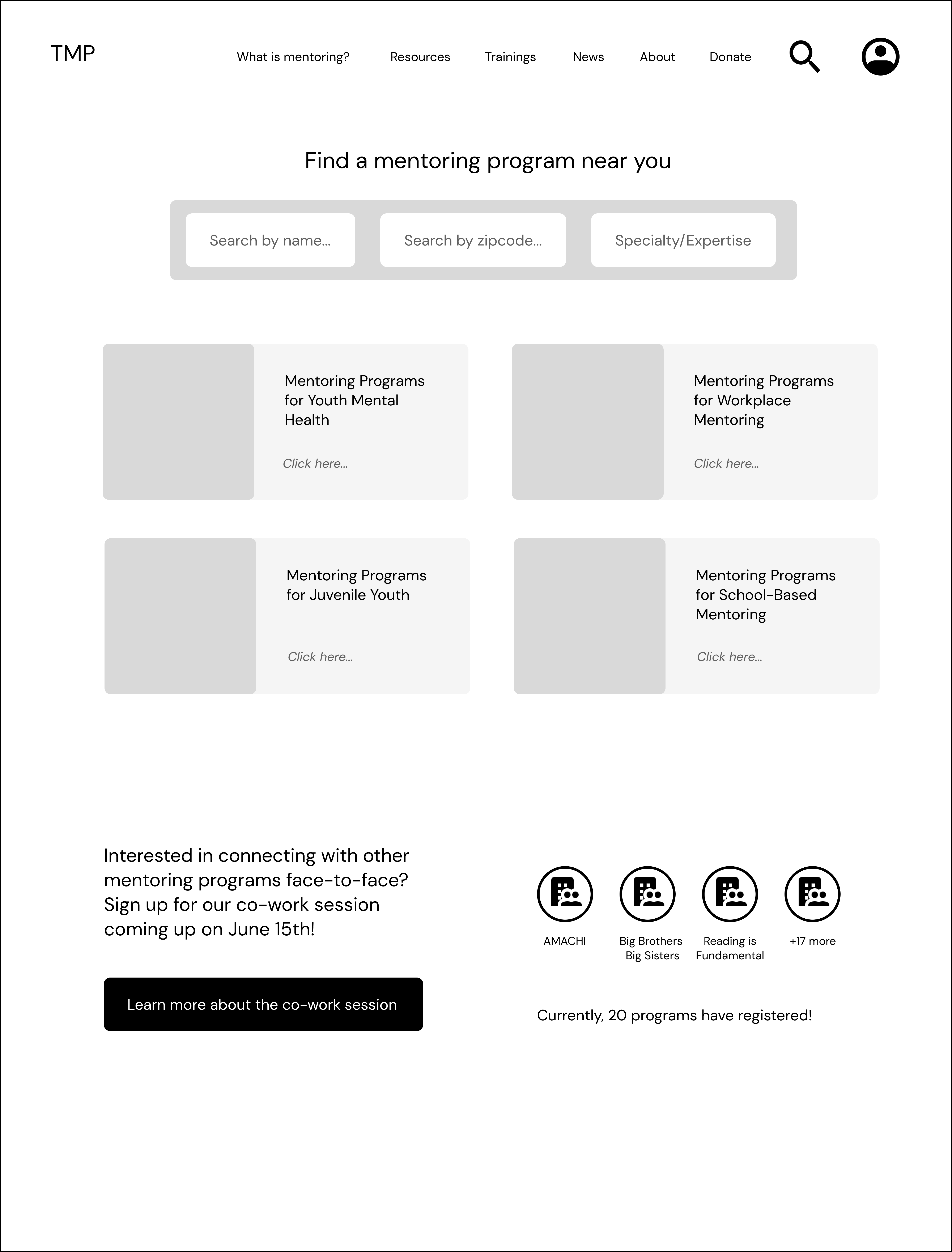
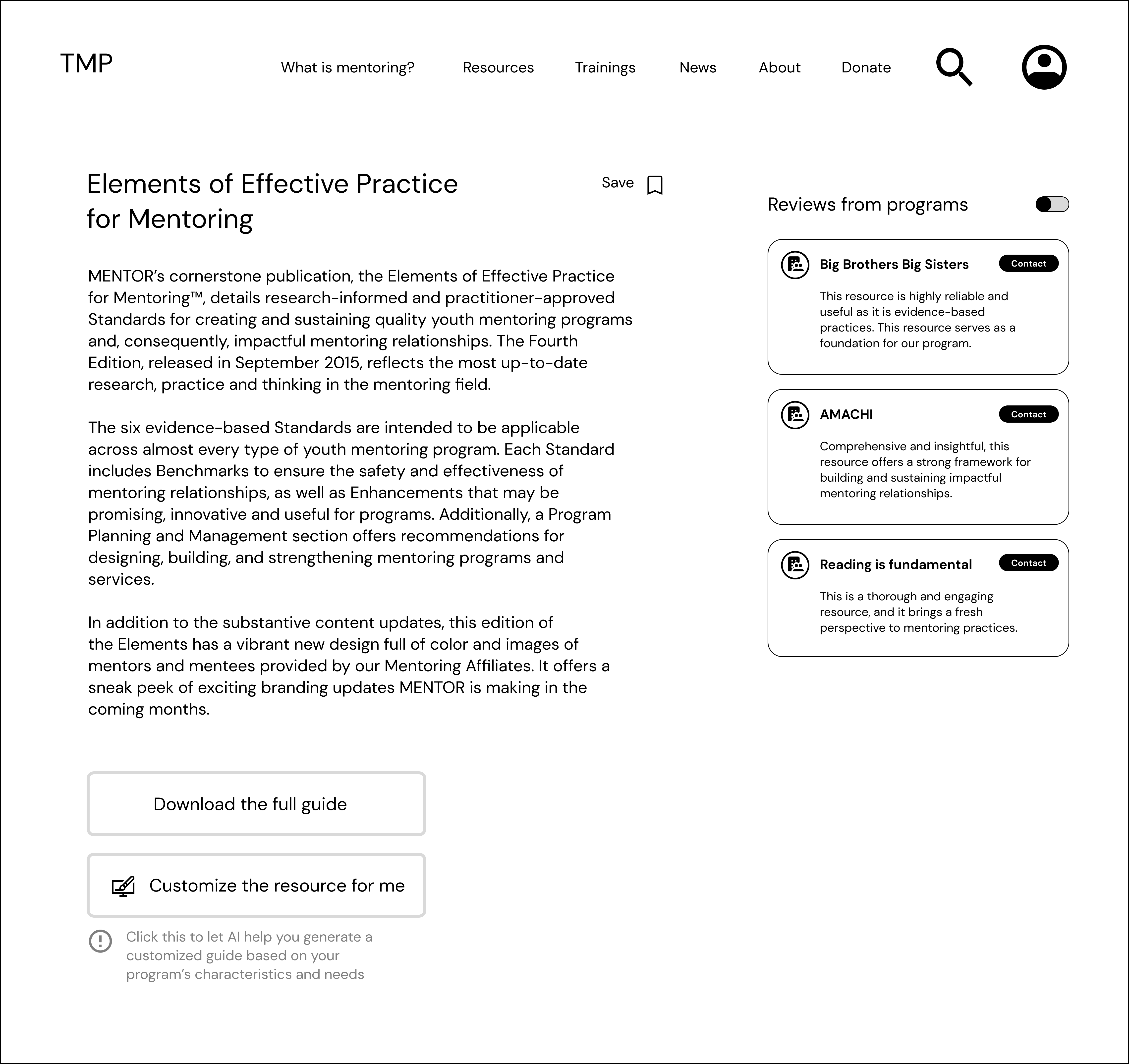
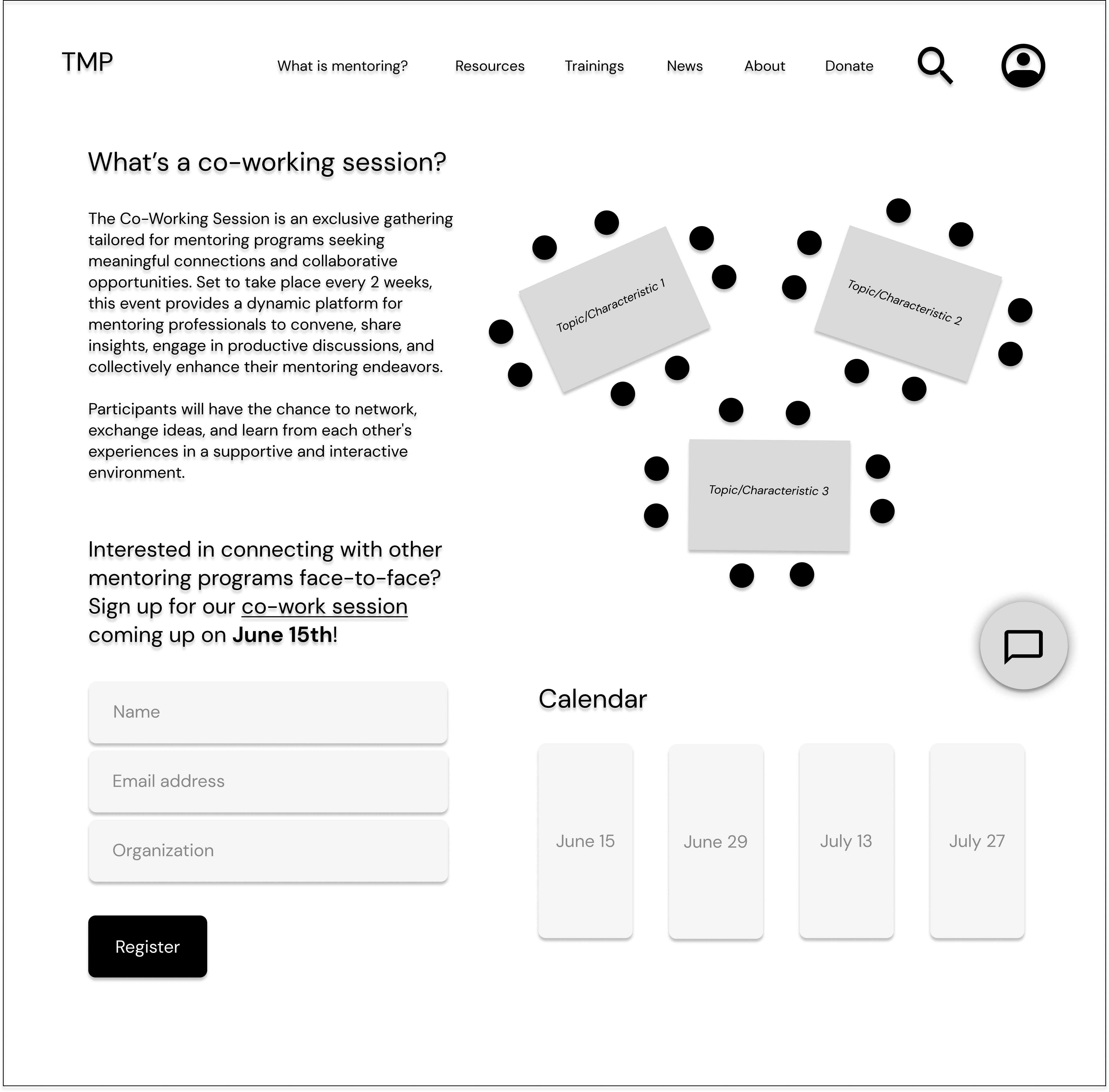
Through testing these 5 prototypes, we learned that the users most valued:
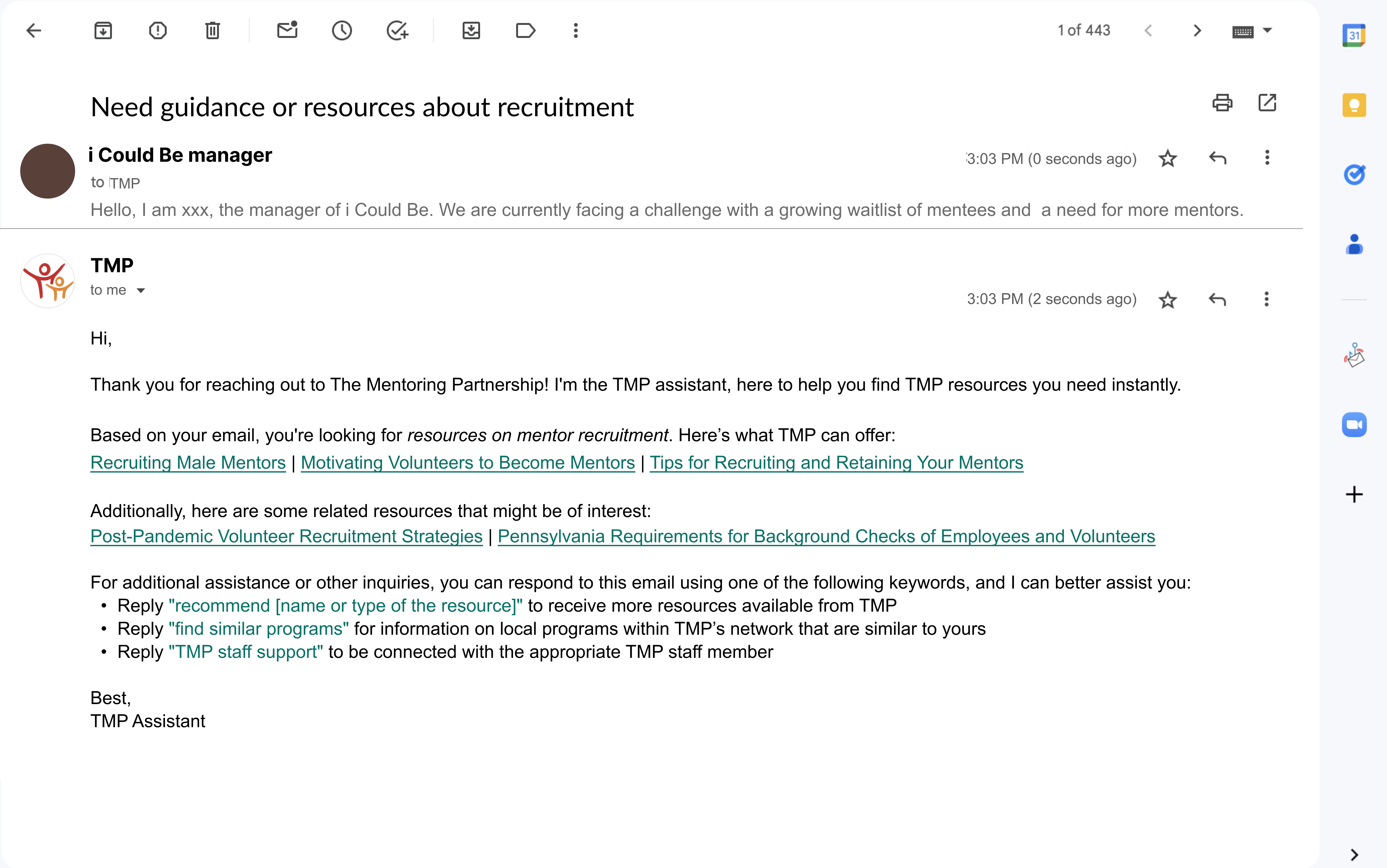
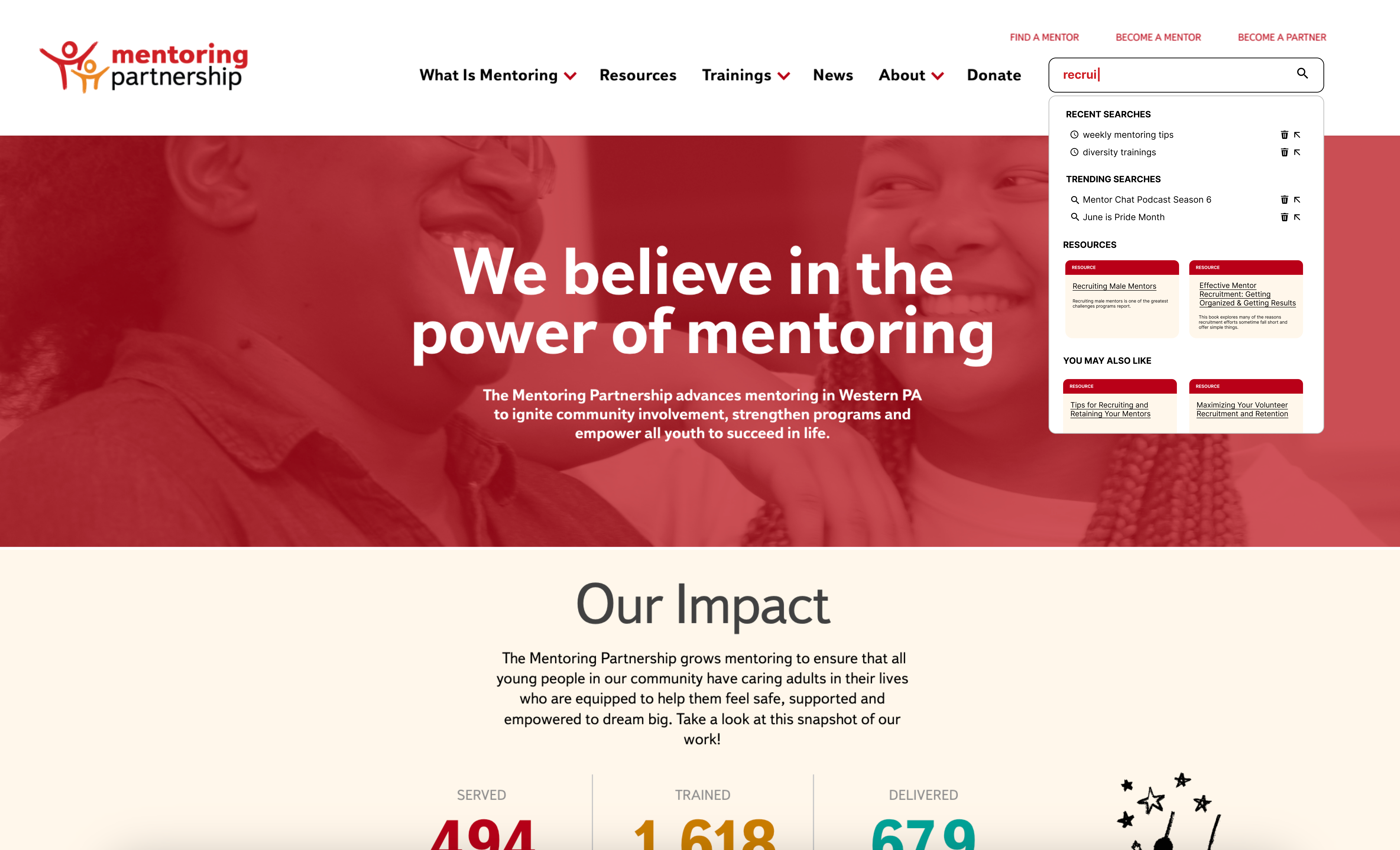
By conducting concept testing with these two prototypes, we learned that the users valued following functionalities in these two search channels.
We also learned that placing an AI assistant with automated replies was unexpected and unwanted by most participants. This led us to eliminate the AI email assistant and focus on a site of intervention that is more natural to support client independence, namely the website.
Based on all insights that we have gathered, we designed our final solution.